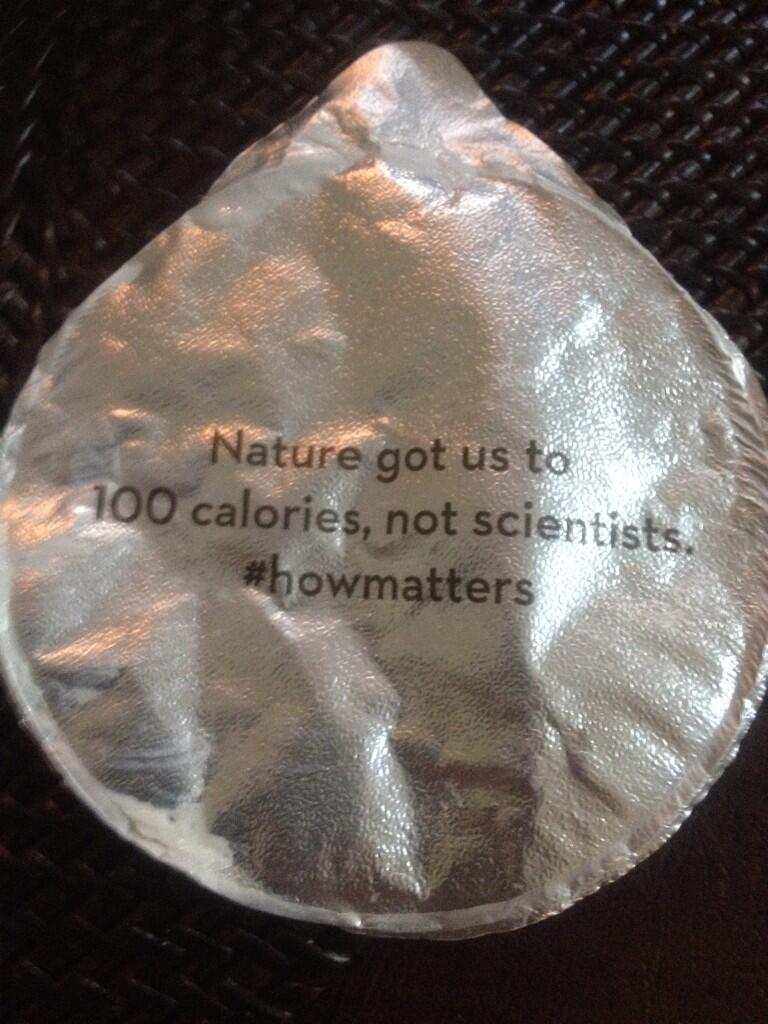

Chobani have been using the “How Matters” campaign to promote their high protein, low calorie Greek yogurts. All was going well until the slogan “Nature got us to 100 calories, not scientists. #howmatters” got picked up by scientists on twitter and, well, they were not happy. Despite Chobani’s claim, it took a lot of scientific expertise to put the nature into a pot. Let’s look at the ingredient list for their fat-free cherry yogurt:
Nonfat Yogurt (Cultured Pasteurized Nonfat Milk). You need milk to make yogurt (#cowmatters) and pasteurization is an essential step to control pathogens.
Live and Active Cultures: S. Thermophilus, L. Bulgaricus, L. Acidophilus, Bifidus and L. Casei. Yogurt is made by bacterial fermentation and the live bacteria can colonize the human gut as a beneficial probiotic. The genetics of lactic acid bacteria is a huge research area. Scientists are using the latest tools to find the communities of organisms that can produce the right flavors and acid in the milk as well as survive passage through the stomach.
Chicory Root Fiber. This is largely inulin, a polysaccharide that is only partially digested in the human body. It behaves as a soluble fiber and allows the “5 g of fiber” claim on the label. Many scientists are interested how polysaccharides like this can act as prebiotics and support the growth of beneficial bacteria in the colon.
Black Cherries, Water, Cherry Juice Concentrate: The cherries sit at the bottom of the yogurt pot and the cherry juice provides some color. One interesting thing about the Chobani product is the red color is quite faded. Other manufacturers of cherry yogurt use artificial colors or colored plant extracts which hold up better during storage and give a brighter color.
Evaporated Cane Juice. This is just sugar given a friendlier label. It’s a long way down the label so there is only a little present but I’m surprised they couldn’t get rid of that. I suspect they couldn’t get an acceptable sweetness with just their high-intensity sweeteners.
Pectin. A polysaccharide used to thicken the yogurt and give a better texture in the absence of fat. Probably from apple or citrus peels. How the pectin polymers interact with one another and with the polymers in the protein gel of the yogurt determines its effectiveness.
Natural Flavors. If you just dunked some chopped up cherries in yogurt is wouldn’t taste great after a week. To make sure it does, they added some unspecified mix of flavors to strengthen the cherry taste. While all the compounds were extracted from a plant, the blending and combining of them to give a realistic cherry taste in a yogurt base is the task of a trained flavorist.
Locust Bean Gum. Another polysaccharide thickener extracted from the seeds of the carob tree. Again it improves the texture of the product as well as helping to prevent those pools of fluid forming on the surface of the yogurt.
Chobani worked hard to make a yogurt that fits the nutritional, quality and label requirements of their consumers and to do so they relied on a lot of science. They also recognize their target market would rather be told it was all-natural, and so that’s what shows up on the label. #sciencematters
